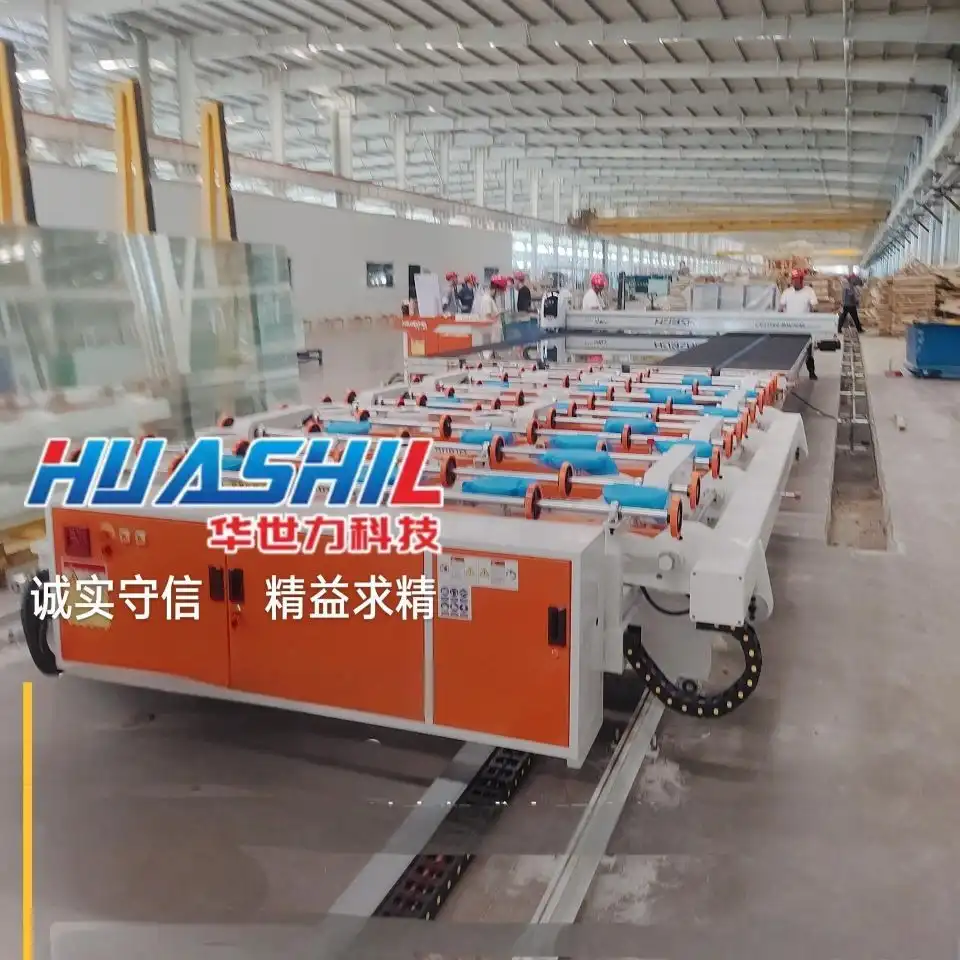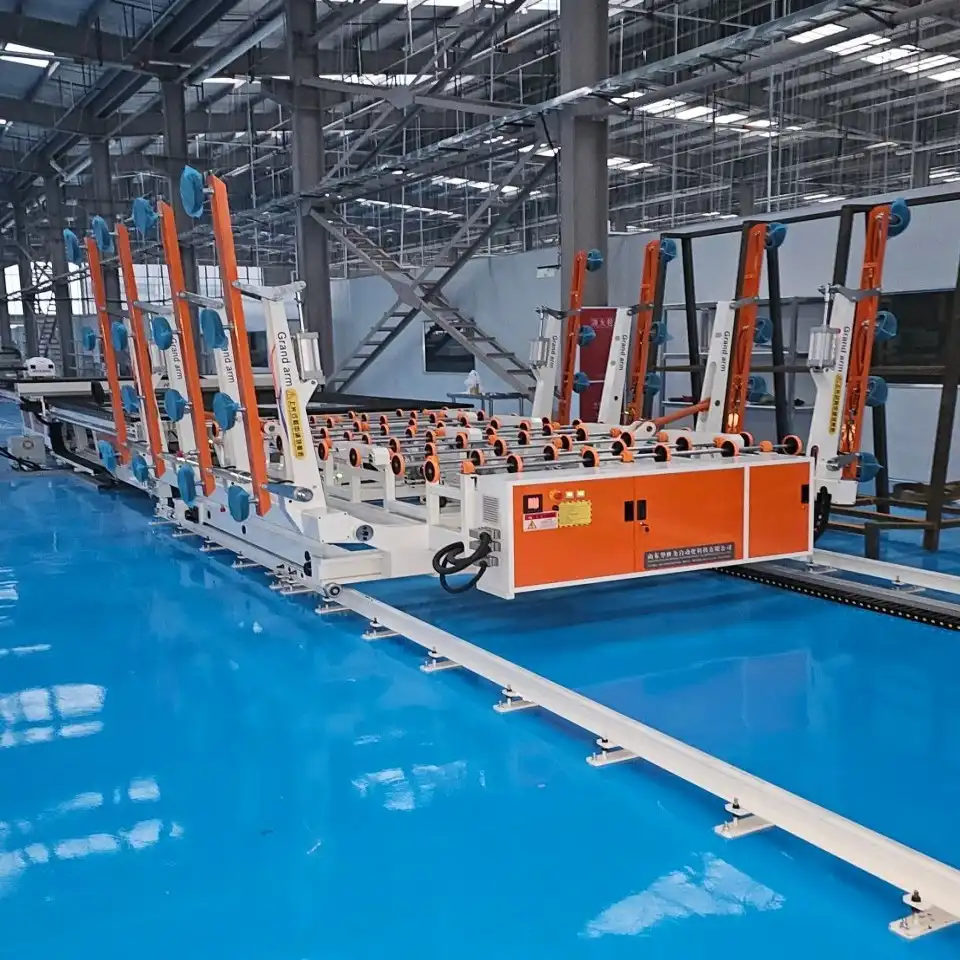Glass processing equipment is essential in modern manufacturing, transforming raw glass into sophisticated products for numerous industries. These advanced machines deliver precision, efficiency, and innovation impossible through manual methods. As demand for specialized glass products grows, understanding the advantages of quality glass processing equipment becomes crucial for businesses seeking competitive advantages.
What factors should be considered when choosing glass processing equipment?
Cost-Effectiveness and Return on Investment
When selecting glass processing equipment, cost-effectiveness extends beyond initial purchase price. Quality equipment delivers substantial ROI through reduced material waste, minimal rework requirements, and lower labor costs. Modern machines maximize yield from raw glass sheets through precision cutting and processing. Automated equipment performs work more consistently than manual labor with fewer errors. These savings typically outweigh initial investments, especially considering that premium equipment offers longer operational lifespans and reduced maintenance. Manufacturers must evaluate acquisition costs alongside operational efficiency, maintenance requirements, and adaptability to evolving production needs.

Technical Specifications and Processing Capabilities
Technical specifications directly determine production capabilities and quality. Modern glass processing equipment handles various glass types, thicknesses, and dimensions with precision. Critical factors include cutting speeds, edge finishing options, and drilling accuracy, which affect production throughput and product quality. Contemporary equipment often incorporates multi-functionality, performing cutting, grinding, polishing, and drilling operations that previously required separate machines. This integration streamlines workflows and reduces material handling. Tolerance capabilities deserve particular attention for precision-demanding sectors like automotive or aerospace. Manufacturers should also evaluate equipment's ability to process specialty glass variants, including laminated, tempered, or coated glass, as these capabilities can open new market opportunities.
Automation Features and Industry 4.0 Compatibility
Automation significantly impacts operational efficiency and product consistency. Modern glass processing equipment features sophisticated CNC capabilities for complex processing with minimal operator intervention. Advanced systems incorporate vision technology that detects material defects, optimizes cutting patterns, and performs in-process quality verification. Industry 4.0 compatibility enables integration with manufacturing execution systems for real-time monitoring, predictive maintenance, and process optimization. Equipment with open architecture controls allows data collection for efficiency improvements. Remote connectivity enables suppliers to provide rapid diagnostic support and perform some maintenance remotely, minimizing downtime. Manufacturers should consider not only current automation requirements but also capacity for future upgrades.
How does glass processing equipment improve production efficiency?
Reduced Processing Time and Increased Throughput
Modern glass processing equipment accelerates production through technological innovations. Automated equipment eliminates time-consuming manual measurements, replacing them with precise digital workflows. High-speed equipment can achieve cutting speeds exceeding 100 meters per minute, dramatically outpacing traditional methods. Multi-tasking capabilities enable simultaneous operations that would traditionally require sequential processing. Quick-change tooling systems and automated program switching minimize setup times between different product runs. These efficiency gains transform production economics by reducing labor requirements, floor space utilization, and energy consumption per unit. For manufacturers facing pressure to reduce lead times while maintaining quality, investment in high-throughput equipment often provides sustainable competitive advantage.
Enhanced Precision and Quality Control
Specialized glass processing equipment delivers quality improvements impossible with manual methods. Advanced equipment routinely achieves positioning accuracy within ±0.01mm, ensuring dimensional consistency across production runs. This precision extends to geometric characteristics like squareness, parallelism, and surface flatness. Modern equipment incorporates measurement systems that continuously verify critical dimensions during processing, making real-time adjustments to compensate for material variations. Edge quality is superior through precisely controlled grinding and polishing processes. These quality improvements reduce warranty claims, enhance customer satisfaction, and strengthen market reputation. Data collection capabilities provide comprehensive production records that facilitate traceability and continuous improvement initiatives.
Minimized Material Waste and Environmental Impact
Glass processing equipment delivers sustainability benefits through waste reduction. Computer-optimized nesting algorithms can increase material utilization by 15-20% compared to manual layouts, substantially reducing waste. This optimization is crucial when processing expensive specialty glass. Advanced equipment minimizes edge trim requirements through precision cutting. Contemporary equipment often incorporates water recycling systems that filter and recirculate coolant water, reducing consumption by up to 90%. Energy efficiency features include regenerative drives that capture and reuse energy during deceleration, variable-speed pumps, and intelligent standby modes. By investing in environmentally optimized equipment, manufacturers achieve both cost savings and sustainability objectives.
What are the latest technological innovations in glass processing equipment?
Smart Manufacturing and IoT Integration
IoT integration with glass processing equipment elevates operational visibility and control. Modern equipment incorporates sensor networks that monitor critical parameters including motor loads, vibration, temperature, and fluid conditions. Cloud connectivity transmits operational data to analytics platforms where AI algorithms identify patterns indicating developing issues before they cause disruptions. This predictive maintenance typically reduces unplanned downtime by 30-50% compared to traditional maintenance approaches. IoT-enabled equipment facilitates production optimization through real-time performance monitoring. Remote monitoring allows equipment specialists to provide expert support without on-site visits. For global manufacturers, IoT connectivity enables performance benchmarking across equipment fleets, facilitating identification and dissemination of best practices.
Advanced Materials Processing Capabilities
Technological innovations have expanded the range of materials and applications manufacturers can address. Contemporary equipment increasingly accommodates complex materials like multi-layer laminated glass, switchable smart glass, and glass-ceramic composites. Hybrid processing technologies enable machines to process not only glass but also related materials such as ceramics, stone, and certain metals. Advancements in tool technology have similarly expanded processing possibilities, with developments in diamond grinding wheels and coolant delivery systems. Ultra-thin glass processing represents a noteworthy capability advancement, with specialized equipment handling substrates as thin as 0.1mm without breakage. Innovations in beam processing technologies—including laser, water jet, and plasma systems—have extended capabilities beyond traditional mechanical methods.
Human-Machine Interface Improvements
User experience innovations have simplified operation while expanding capabilities. Intuitive touchscreen interfaces with graphical programming environments allow operators to create complex processing sequences without extensive CAD/CAM knowledge. Modern equipment features augmented reality overlays that project processing information directly onto work surfaces. Ergonomic improvements incorporate height-adjustable controls, loading assist mechanisms, and improved workplace lighting. Multilingual support facilitates global deployments and accommodates workforce diversity. Remote operation capabilities allow authorized personnel to monitor production, adjust parameters, and troubleshoot issues from any network-connected location. Human-machine interfaces increasingly incorporate contextual assistance functions that provide operators with relevant information based on specific operations being performed.

Conclusion
The benefits of using glass processing equipment extend far beyond basic manufacturing capabilities, offering transformative advantages in efficiency, quality, sustainability, and innovation. Modern glass processing equipment enables manufacturers to achieve unprecedented precision, minimize waste, and adapt to evolving market demands with remarkable agility. As technological innovations continue to advance, glass processing equipment will undoubtedly play an increasingly central role in developing the next generation of glass products across diverse industries.
Shandong Huashil Automation Technology Co., Ltd. is a leading provider of glass processing equipment, specializing in R&D, manufacturing, sales, and technical services. Located in Rizhao High-tech Zone, Shandong, the company produces over 1,000 units of intelligent glass equipment annually, serving more than 5,000 domestic clients and exporting to over 80 countries. Huashil's main products include Mirror Cutting Machines, sintered stone machines, and complete glass processing equipment. For more details, contact salescathy@sdhuashil.com.
References
1. Johnson, M.R. & Williams, P.T. (2023). Advances in Automated Glass Processing Equipment: A Comprehensive Review. Journal of Glass Technology, 47(3), 215-232.
2. Zhang, L., Chen, Y., & Thompson, R. (2024). Sustainable Manufacturing Practices in Modern Glass Processing. International Journal of Industrial Engineering, 18(2), 112-129.
3. Patel, S. & Rodriguez, C. (2023). Industry 4.0 Implementation in Glass Processing: Case Studies and Best Practices. Glass Processing Technology Review, 35(4), 378-395.
4. Nakamura, H., Smith, J., & Liu, W. (2022). Energy Efficiency Improvements in Contemporary Glass Processing Equipment. Energy and Manufacturing, 29(2), 142-158.
5. Wilson, E.R. & Alvarez, M. (2024). Quality Control Systems for Advanced Glass Processing: An Analytical Framework. Quality Engineering in Materials Processing, 15(1), 87-104.
6. Kumar, R., Ferguson, T., & Chen, D. (2023). Economic Analysis of Investment in Modern Glass Processing Equipment. Journal of Manufacturing Economics, 41(3), 267-284.



